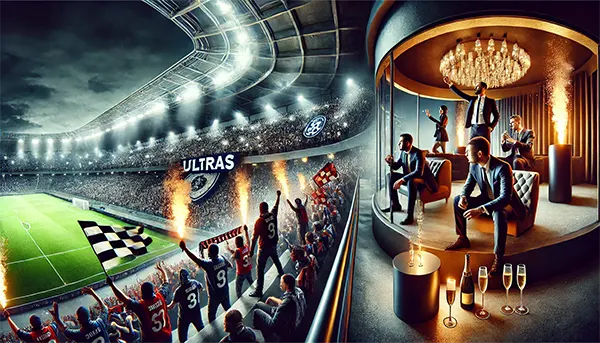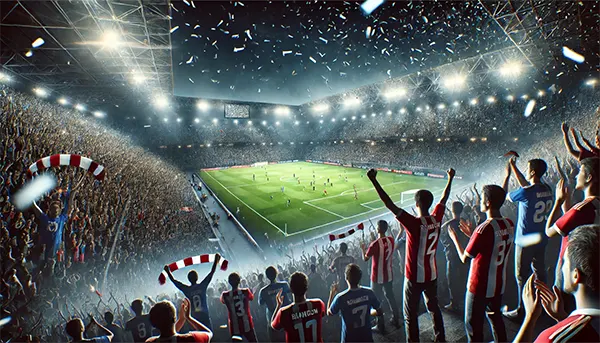Fan Cultures in Sports: From Ultras to VIP Clubs

Sports fans are the lifeblood of any competition. Their passion, dedication, and traditions shape the identity of teams and create an electrifying atmosphere at stadiums. From the intense, choreographed displays of ultras to the exclusive world of VIP fan clubs, fan cultures vary widely across different sports. This article explores the most significant fan movements, the distinctions between ultras and regular supporters, and the evolution of elite fan experiences.
Notable Fan Movements in Football, Basketball, and Ice Hockey
Across various sports, fan groups have established themselves as powerful forces, shaping the culture of their teams and even influencing management decisions. These groups organise chants, create spectacular displays, and maintain traditions that define the spirit of the game.
In football, European ultras are known for their highly coordinated support, involving pyrotechnics, choreographed banners, and unwavering dedication. Groups such as Borussia Dortmund’s “Yellow Wall” and Boca Juniors’ “La 12” set the standard for fan involvement. They are often highly organised and maintain a strong influence over their clubs.
Basketball has its own unique fan cultures, with franchises like the Golden State Warriors boasting one of the loudest and most dedicated followings in the NBA. Meanwhile, in European basketball, groups like Partizan Belgrade’s “Grobari” replicate the passion seen in football ultras, bringing intense energy to arenas.
The Role of Ice Hockey Supporters
Ice hockey fans, especially in North America and Europe, bring an electrifying atmosphere to arenas. The Montreal Canadiens’ supporters are famous for their deep-rooted traditions, while European teams like Finland’s Jokerit see highly coordinated fan groups leading chants and creating tifo displays.
Unlike football ultras, hockey supporters often focus more on vocal support rather than large-scale choreography. However, in countries such as Russia and Sweden, supporters’ groups engage in elaborate pre-game rituals and maintain intense rivalries, mirroring the atmosphere found in football.
Regardless of the sport, passionate supporters play a crucial role in defining the identity of their teams. Their influence extends beyond the game itself, shaping team traditions and even impacting club policies.
Ultras vs Regular Fans: Key Differences
While all sports fans share a common love for their teams, the distinction between ultras and regular supporters is significant. Ultras are more than just dedicated fans; they operate as highly organised groups with strict rules, a deep commitment to their club, and a focus on fan-driven initiatives.
One of the defining characteristics of ultras is their independence from official club organisations. Unlike casual supporters, they fund their own banners, travel to away matches en masse, and maintain their own codes of conduct. This independence allows them to influence club decisions and maintain a level of autonomy.
Casual fans, on the other hand, engage in traditional support by attending matches, wearing team merchandise, and celebrating victories. Their experience is more relaxed compared to the intense, structured lifestyle of ultras.
Rituals and Traditions of Ultras
Ultras take pride in their rituals, which include choreographed displays, unwavering support for 90 minutes, and the creation of unique chants. These groups establish strong community bonds, with a sense of loyalty that extends beyond the stadium.
Many ultra groups impose strict codes of behaviour, banning certain actions deemed disloyal. For example, members are often discouraged from leaving a match early or purchasing official club merchandise to maintain their independence.
These traditions, while sometimes controversial, have become an integral part of football culture. Despite clashes with authorities, ultras continue to shape the atmosphere in stadiums, ensuring an unmatched level of passion in the stands.

Exclusive Fan Clubs: VIP Zones, Private Boxes, and Premium Memberships
While ultras represent the most passionate grassroots supporters, another side of sports fandom exists in the form of exclusive fan clubs. VIP lounges, luxury boxes, and premium memberships provide a completely different experience, catering to affluent supporters seeking comfort and exclusivity.
Many top football clubs offer VIP experiences that include private hospitality suites, gourmet dining, and direct access to players. Clubs such as Real Madrid and Manchester United have extensive VIP programmes designed to attract corporate clients and high-net-worth individuals.
The rise of premium fan clubs has led to a shift in stadium culture, with some traditional fans feeling alienated as clubs prioritise commercial partnerships. However, these exclusive experiences have become a significant revenue stream for major teams worldwide.
The Future of VIP Fan Experiences
As sports organisations continue to focus on commercial growth, VIP fan experiences are expected to expand further. From digital memberships that offer exclusive content to luxury travel packages for away games, clubs are constantly innovating to cater to high-end supporters.
With technology playing a bigger role, some clubs are introducing virtual reality experiences for premium members, allowing them to immerse themselves in pre-match preparations or exclusive training ground access.
Despite the evolution of fan culture, the heart of sports remains the passionate supporters. Whether in the stands chanting as ultras or enjoying a match from a private suite, fans remain the driving force behind the spirit of the game.
